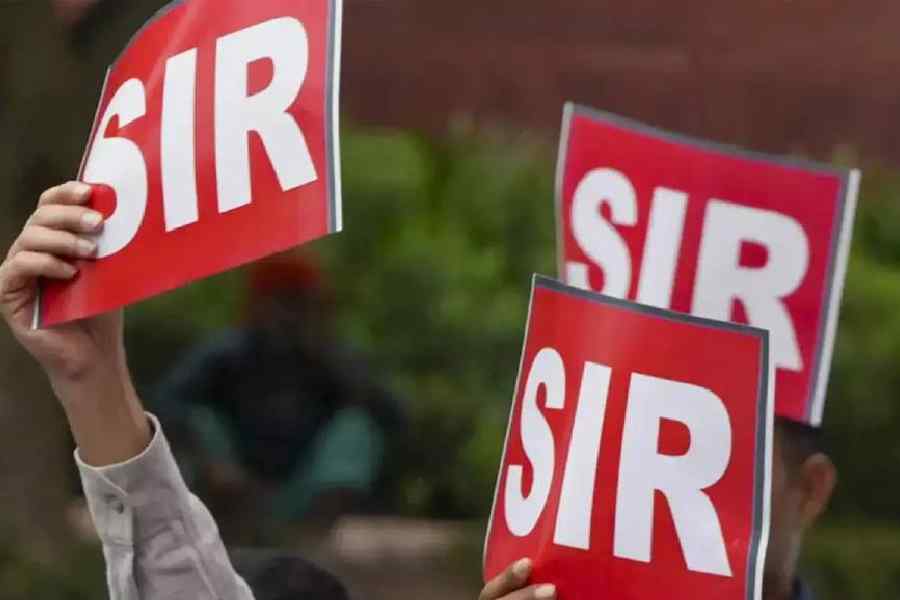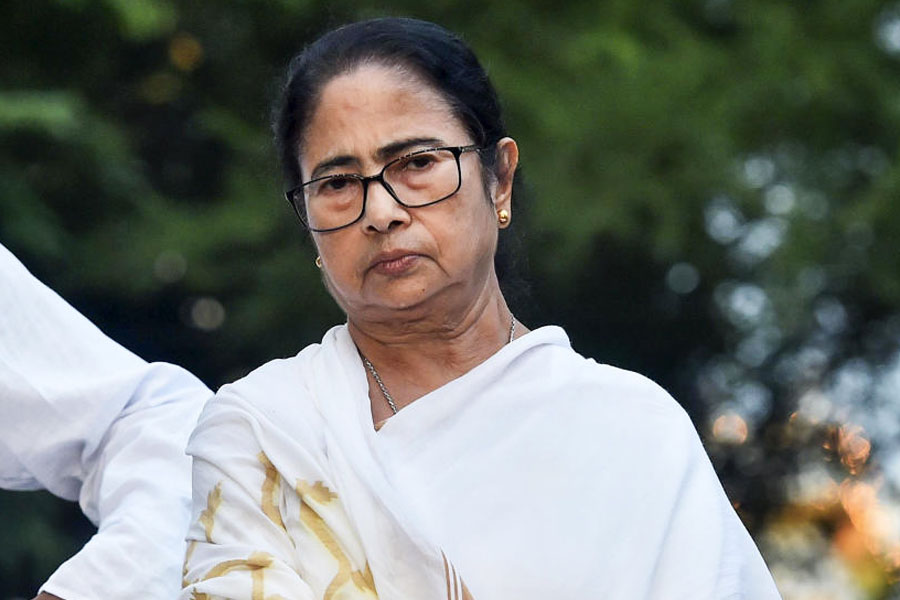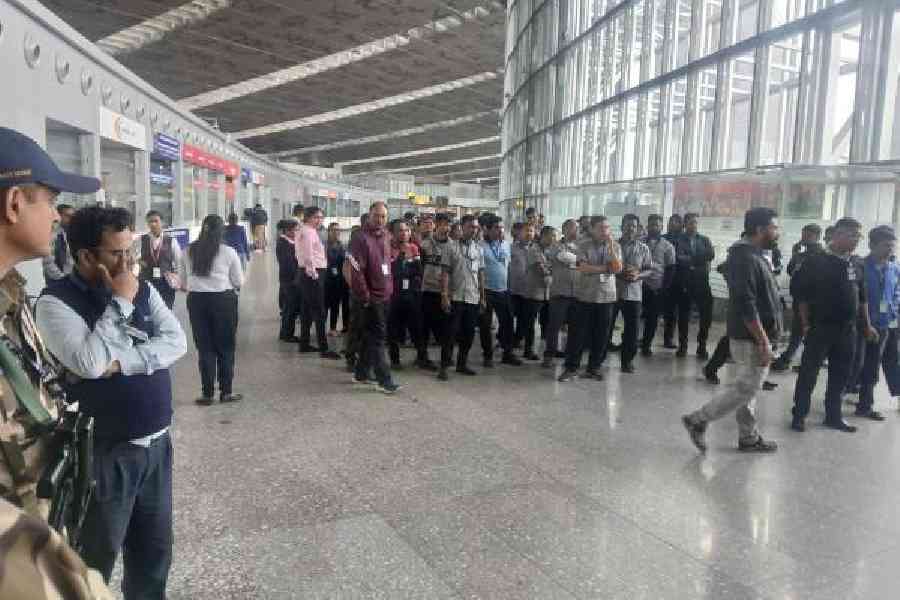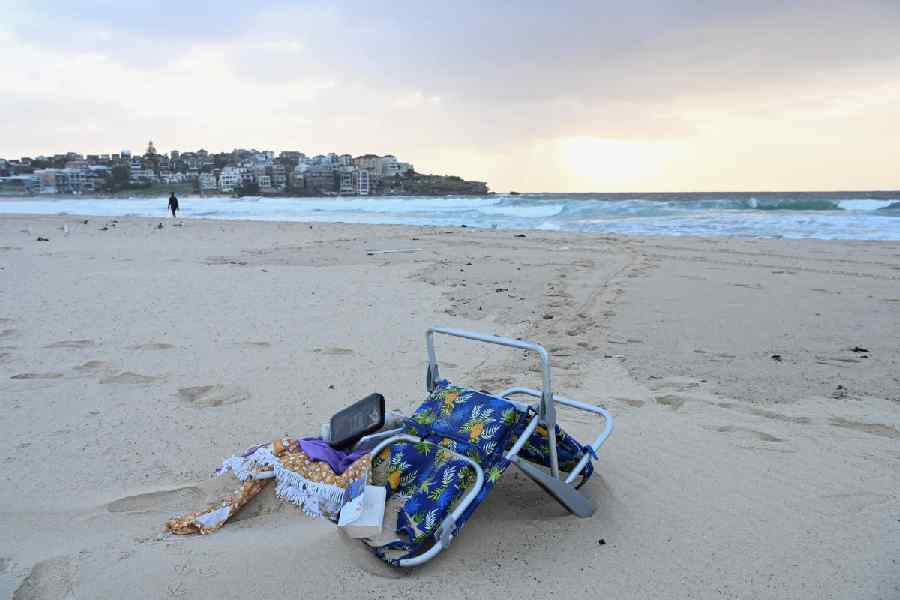Kuttapuzha, on the outskirts of Tiruvalla town in central Kerala, has a tale to tell. Last year, senior citizens of the village started a day care centre called Pakalveed. Elders spend the day at the centre, and return to their homes in the evening.
'At this age all we need is someone who can spend time with us,' says C.T. Titus, a resident. The former professor of English lives with his bedridden wife in a six-bedroom bungalow whose impregnable silence is occasionally broken by the shrill ring of the telephone. The caller is usually one of their three sons, all settled in different parts of the country. The day care centre is the one bright spark in their solitary lives.
A day care centre for the old? That's right. And given the state's burgeoning population of the elderly, it's hardly surprising that Kerala has come up with what is almost certainly the first institution of its kind in the country.
Indeed, Kerala has the highest proportion of elderly people (60 and above) in the country. People in the state are living longer — the average life expectancy in Kerala is 70 years as against the national average of 62 — and for the most part, living alone, or seeking assisted living.
'This is the age when you become a superfluous entity. It's not that my children have disowned me but they live in a world of their own,' Titus says.
In the next few years, Kerala will undergo a huge demographic shift. According to a study titled Situation of Elderly in Kerala: Evidences from Kerala Ageing Survey 2014, released by the Centre for Development Studies (CDS) in September, the state has added one million elderly people every year since the census of 1981. Currently, the elderly comprise 14 per cent of the total population in Kerala. By 2030 their number will stand two per cent above the population of children. By 2061, it is expected to touch 40 per cent of the population — double the national average.
'The reduction in family size, migration and the high work participation rate of women have led to an increasingly greying population living alone,' says S. Irudaya Rajan, one of the researchers who conducted the CDS study. 'In Kerala, it isn't uncommon to see a 90-year-old staying with a 75-year-old relative because the rest of the family will be either in the Gulf or Delhi.'
In 2009, the Kerala State Planning Board released a report, Growing Old in Kerala, which said that about six per cent of the elderly in the state lived alone — 7.5 per cent among the 60-64 age group and 10.3 per cent in the 80-plus category.
Not surprisingly, the state today has the highest number of old age homes in the country — close to 400 with 15,000 residents. Yet government old age homes are running beyond capacity and the private ones have a long waiting list.
For P.C. Varghese, an 82-year-old former income tax officer, and his wife, home is now a 410-sqft living unit in Mission Valley, a private trust-run senior citizen care home for those aged 65 and above in Kottayam. 'I am very happy here,' Varghese says. His ancestral home situated in a nearby town is kept locked. 'Our three children live abroad. I intend to live here until my last breath,' he adds.
The two-storey building with 62 living units is home to 24 people, including three couples. For the last eight months, Varghese and his 75-year-old wife have taken on lease a deluxe unit which consists of an air-conditioned bedroom with attached washroom and a small foyer. At Mission Valley, 95 per cent of the units were booked in less than six months of its launch.
Rajamma (she uses only her first name) lives in a government-run old age home in Thiruvananthapuram. Her sole possessions are three pairs of Mundum Neriyathum (the traditional Kerala sari). She sleeps on an iron cot in the dormitory which she shares with 25 other women. The mother of seven children was left by her daughter at the Old Age Home for Women in Poojapura a year ago.
-

Abandoned: Residents of Old Age Home for Women in Poojapura
'Earlier we were just a day care home but most women who were left here were never taken back by their children. They would give us fake addresses and we couldn't trace them. So the social justice department decided to turn it into a full-fledged old age home,' says its superintendent, Rashida Nigam. The place has a sanctioned strength of 25 residents but houses 50.
The demographic transition in Kerala is bringing with it severe socio-economic consequences such as rising healthcare costs and pressure on social security schemes.
'The cost of 'dependency burden' of Kerala households is on the rise,' points out K.G. Moli, population information officer, department of demography, Kerala University. Dependency ratio is the ratio of people of non-working age (both the young and the old) to those of working age. In 2001, the old-age dependency ratio was 16.52. By 2011, it had touched 19.64.
An article published in the UN periodical, Asia Pacific Population Journal, states that the old-age dependency ratio for Kerala will go up to 31 by 2026. (Incidentally, the state is also heading towards zero population growth.) In other words, the demographic dividend — the availability of young workers — will soon begin to disappear. 'Also, if earlier the expense of a household was more on education now it is going to be on healthcare,' Moli adds.
Depression and dementia are also becoming the most common health problems for the elderly, and these bring their own complex problems regarding care.
'Depression is becoming a common problem among the elderly. Most families may treat their old for diabetes, eye ailments or heart conditions but not for dementia,' says P.K.B. Nayar, chairman, Centre for Gerontological Studies, Thiruvananthapuram. His organisation trains underprivileged women to work as caregivers.
Suicides among the elderly have been going up steadily too. According to the National Crime Records Bureau, in 2013, 19.6 per cent of the 8,646 people who committed suicide in Kerala were above 60.
In recent times, the state government has been seeking to deal with the aged. Kerala, the first state in the country to have a mental health programme in all districts, is also one of the first states to adopt an ageing policy. Last year, it revised its Senior Citizen Policy 2013.
'Now our goal is to rehabilitate the elderly in their homes,' says M.K. Muneer, minister for social justice and panchayats. The ministry has now categorised the elderly into 'new old' (60-69 years), 'old old' (70-79) and 'oldest' (80 and above). The government intends to make the 'new old'' employable and provide the 'oldest'' with caregivers in their own homes.
'But the mindset needs to change. For that, we are going to make changes in school curricula so that children grow up valuing the elderly as assets and not as a liability,' Muneer adds.
In December, the government will launch its 'We Care' scheme under which college students will be trained and asked to volunteer at old age homes. Non-government organisations are also being asked to adopt old age homes. The government is also considering a scheme in which individuals can adopt elderly people, on the lines of child adoption schemes.
Plans are also in place for a Model Anganwadi project which aims to bring together three generations — the toddler, the teenager and the aged — under one roof. In the coming years, with a fall in the use of anganwadis and in school enrolments (because of the low population growth), the government will use the premises to house the elderly.
Even private organisations have joined the fray. A United Arab Emirates-based Malayalam TV channel, NTV, is running a year-long campaign to create awareness about the aged. Dubai-based Mathukutty Kadone, NTV's chairman and managing director, states that the channel also plans to file a public interest litigation in Kerala for speedy trials of cases related to the abuse of the elderly by their children.
'We have already started awareness campaigns in schools across the 14 districts of Kerala. We intend to run several competitions on this theme and develop short programmes related to it. The expatriate Malayalee in the Gulf is our target audience for the TV shows,' Kadone says.
Builders are eyeing the space, too. 'There are currently over 30 senior living projects in India, and a number of these are in Kochi and Coimbatore,' says Deepak Bhavsar, managing director, strategic consulting, JLL India, an investment management firm specialising in real estate.
The demand for allied services, such as home delivery of medicine, health hubs keeping track of medical records and health check-ups, home nurses, mobile mortuaries and web-telecast of funerals for family members abroad, is on the rise.
God's Own Country is slowly turning into Grey's Own Country, Rajan rues.
Age angst
Kerala's total population: 3.34 crore. The elderly (60 and above) constitute 14 per cent of this
By 2060, the elderly will constitute 40 per cent of total population of Kerala
The total population growth in 2001-11 was 4.91 per cent, down from 9.42 per cent in 1991-2001
The population of the elderly is growing at a perpetual rate of 2.3 per cent
In 2010, around 17.6 per cent of those who committed suicide were above 60; in 2013 it was 19.6 per cent
Figures from Census 2011, CDS study, NCRB











